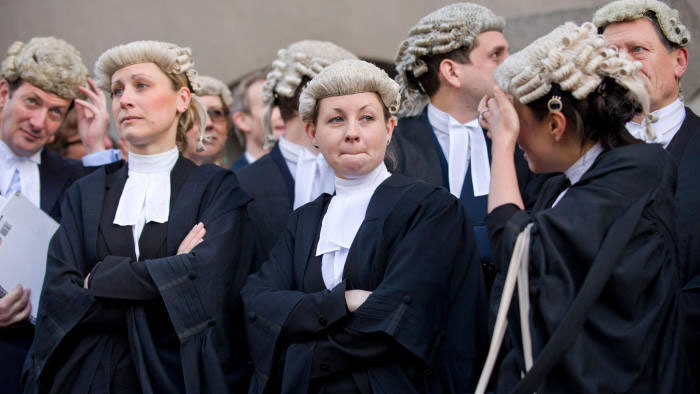Why do foreign judges and lawyers wear wigs?
The following article we will help readers dig deeper to get the answer to this question.
The wigs serve to ensure the 'anonymity' of the judges. This wig is called a justice wig. It is considered a symbol of law and power to a certain extent.
The special thing is that this wig of theirs will not be cleaned, not washed. Because they believe that the dirtier and darker the wig, the more independent and experienced the judge and lawyer are. It can be seen that the wig means that the person using it will remove all discrimination on the basis of ethnicity, religion, color of the skin, put themselves under a common standard representing the law and will adjudicate the case in a fair manner. fair, without prejudice.

The wig helps to hide the identity of judges and lawyers.
Besides symbolism, in an era where technology has not developed as strongly as today. The wig also helps to hide the identity of the judges and lawyers, making them more difficult to identify outside the court.
For example, in Australia in the 1980s, a series of attacks on Family Court judges in this country occurred consecutively. The Family Court was established by the Australian government in 197, and does not require judges to wear gowns or wigs to create a less dignified court atmosphere. However, after these attacks, Australia had to ask the Family Court judge to put on a wig and gown.
There is an opinion that the fact that judges and lawyers wear white wigs and black robes represent the two extremes of clarity and transparency between justice and crime. And the white hair on the head is the ultimate justice. When the team enters, the person doing that job only has the duty to clearly outline the black and white, the market. This comes from the past, the British judicial system developed, often intellectuals have such hairstyles, so it has been maintained until now. Instead of having their hair dyed and dyed, judges and lawyers will wear wigs.
The origin of foreign judges and lawyers wearing wigs
According to a source from Fashion-History, the image of judges and lawyers wearing wigs can be seen as a consequence of 17th century fashion. King Charles II imported the hair. fake hair from France, entered England in 1660. The reason is because these hairstyles are the 'fashionable' style for the rich and powerful gentlemen at this time. This hair affirms that its wearer has a higher social status than commoners.
It was the King of England who ordered British judges and lawyers to wear these hairs. This was as a way to assert his authoritative position in the court. By the 18th century, although the wig was no longer a popular fashion, the judiciary in England and Europe still considered it an important part of their culture and court dress.
Wigs have largely fallen out of court use in the 20th and 21st centuries. Today, only Britain, and some countries or territories that were former British colonies, still use hair. fictitious for ceremonial purposes. Since the beginning of the 21st century, the judges of the High Court and the Queen's Court in England and the countries of the Commonwealth have kept the tradition of wearing shoulder-length wigs when attending important events. Ritual.
For routine trials, judges often use shorter wigs for comfort. Lawyers in these countries even use a more 'shortened' version of the lawyer's white hair than traditional 17th-century wigs. cut short, revealing part of the forehead and front hair.
- Interesting history of British judges' wigs
- Why do old English men often wear wigs?
- The ghost is mysterious in a Mexican court
- Women with male names are more likely to succeed in law
- This AI defeated the top 20 US lawyers in the field they were best at
- The robot predicts exactly the judge's judgment
- Wigs - Luxury beauty accessories for ancient Egyptian women
- The secret behind the mummy of ancient children in Chile
- Great benefit of knowing foreign languages
- The woman suddenly said a foreign voice after pulling out her teeth
- American lawyer looking for a missing person through a dream
- The foreign consul brought a Chinese dynasty to collapse
 The truth about the mysterious red-haired giant at Lovelock Cave
The truth about the mysterious red-haired giant at Lovelock Cave Inunaki Tunnel: The haunted road leading into Japan's 'village of death'
Inunaki Tunnel: The haunted road leading into Japan's 'village of death' The mystery of the phenomenon of human reflection before dying
The mystery of the phenomenon of human reflection before dying 6 mysterious phenomena, although science has been developed for a long time, still cannot be answered
6 mysterious phenomena, although science has been developed for a long time, still cannot be answered